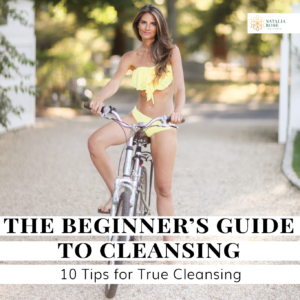A beautiful thing never gives so much pain as does failing to hear and see it. — Michelangelo
All modern eating is disordered eating. The consumption of processed foods in thoughtless combinations, three meals a day plus snacks, all the grain, flesh, packaged foods and drinks—all of this is grossly unfit for the human body. The FDA guidelines and food pyramids themselves are disordered.
Eating disorders are not the exclusive domain of anorexia, bulimia, and overeating. These “text book” disorders are poorly understood and treated. The common threads that anorexics and bulimics all share are:
1) They are usually of above average intelligence.
2) They are typically (but not always) from high-income households or backgrounds.
3) They are angry about something, usually unconsciously.
4) From an early age, they have picked up from authority figures that they must not say what they really wish to say, because the people who ought to hear it either won’t want to hear it or will harshly refute it.
This last point is extremely important because the voice and the ingestion of food both correspond with the throat—a major energy center in the body, which some of you may know of as the “throat chakra.” The throat chakra becomes imbalanced when personal expression, which is its main raison d’être, is stifled. Keep this in mind as you read on…
When you raise a girl with above average intelligence in the typical fashion, she will naturally pick up on all the paradoxes and hypocrisy of her world (i.e., adults say one thing but do another; adults frequently use terms like “love,” “commitment,” “respect” and “integrity” yet betray those values with their behaviors). She witnesses that, despite all the education, class expectations, climbing of social and corporate ladders, and the amassing of wealth, the adults around her show no signs of true happiness, self-confidence, individuality, or selflessness.
Subconsciously, the mind of a bright girl stores up all these observations. As society puts her through the “proper young lady” assembly line, she starts to lose touch with her authenticity (and, with it, her keen perception) as she absorbs the customary rules and definitions assigned to her. Her subconscious doesn’t forget, though. It knows that something of great value was taken from her, and this manifests in little things at first: mild discontent, talking back, contempt for her parents—or, on the flipside, an intense desire to please or to be perfect.
She also learns that the way adults do things is not to be questioned or discussed, but blindly accepted. And if she is to be considered a success and gain the much desired approval of her elders, she is meant to fall into line with these customs and live up to their values. Her peers are experiencing the same thing and thus serve to reinforce this message in both spoken and unspoken ways. The girl is left to swallow her confusion day after day.
By this point she feels powerless to change the outside world. But wait! There is still one thing left within her power to dictate—her body. Thus she begins to exert the little control she feels she can over what she does and does not put into her mouth. She either closes off her throat center to defend her boarders (anorexia) or she overeats, feeding herself the love and attention that she craves, and then purging it as a way to express her feelings, violently and furiously, into the only thing that she knows will receive it—the toilet (bulimia). The fact that society worships the ideal of skinny, “sexy” fashion models only reinforces the girl’s behavior.
Anorexia and bulimia are two sides of the same coin. Anorexia is a woman’s self-protective response to defend her borders against that which she perceives to violate her (food becomes symbolic of the society that has stolen her innocence, her clarity and authenticity). Bulimia is a way of stuffing herself numb from the pain of being unheard and hurt by her world, and a violent, angry rejection of what she has been told to accept. When no one will hear her (not even the eating disorder institutions that only uphold the madness of the world that her spirit rejects), she seeks expression and release from her fury in the confined “safe” space of the bathroom. This form of release, of course, becomes her prison. This is how the girl deals with society’s double-edged sword.
Instead of recognizing and treating the true cause of her eating disorder, at the first sign of straying from the norm the authorities label her and send her off to a center where she is forced to swallow more of the same suffocating conformity and violation of her spirit. Within the walls of the center, she is forced to learn what “normal” eating habits are (as if she didn’t already know) and then instructed to model these “good” habits to demonstrate she’s well enough to function in the world again.
Of course, such girls do not actually get better. If they appear to be doing well enough to re-enter the world, it’s only because they’ve suppressed their pain more deeply—because once again they have received the clear message that they will not be heard. At a certain point, they find it easier to numb themselves than to continue to be disappointed.
Overeating disorders are commonly due in part to food addictions that take over once the body has become a full-fledged host to yeasts. When a woman goes through an entire loaf of bread or a bag of cookies or chips, these foods are feeding the yeast in her body, and the yeast keeps sending them out for more. The other part of overeating is the desire to fill a feeling of emptiness with food.
But the most prevalent eating disorder is so common that it passes for normal today. Most girls may not be outright starving themselves or purging, but they are nonetheless suffering enormously with their bodies and dieting. The average girl is infatuated with having “a good body.” This is as common as wearing makeup, and takes root at a younger and younger age. I’ve seen it manifesting as early as the second grade!
It is overlooked as normal for girls to diet all the time now. The reality is that these girls are suffering from the all-consuming focus, time and energy that conventional dieting requires. I have yet to encounter a young woman this year who is not in some way distressed about her body. Speaking as someone who was plagued by this infatuation as a teenager and knows its insidious depths, I can say without hesitation that this phenomenon drives an epidemic of suffering among girls.
The pretty girls, the thin girls, the smart girls, the girls you wouldn’t think even give it a second’s thought, who seem impervious to body image insecurities, all have it and think about it, plan around it, condemn themselves for what they eat, and are generally consumed by it around the clock! Most of the time their parents know and ignore it—either because they have the same issues or have been projecting the importance of being thin onto their daughters and see nothing wrong with it.
Most disturbingly, parents and society contradict their own message by perpetuating a way of eating that is doomed to make girls imbalanced, heavy, moody and generally less than naturally beautiful. This makes no sense at all. You cannot feed your infant baby formula (depriving it of the most important chance of seeding the intestine with good bacteria/flora from mother’s milk), and then proceed to feed a child on mainstream grocery products that accumulate in the body for thirteen years, and then expect her body to utterly defy nature and blossom with gorgeous legs, a perfect midriff and flawless, dewy skin! You sow the seeds of your child’s body every day. You cannot harvest healthy, beautiful fruit in poisonous soil.
Parents, you cannot adhere to the social norms around food and then expect your girls to enjoy a naturally healthy, lean body! This is cruel because your girls don’t understand why they are plagued with their physical imbalances. They feel limited to two decisions: either enter a diet-prison or just be heavy and uncomfortable. Either way is torture!
We are a “Hi, how are you? You look great!” culture. Our social interactions are typically robotic reflex expressions that reinforce that how we look should somehow tell the story of our lives. Well, take off the makeup, the designer clothes, put down the Prada handbag and kick off the Monolos, then let me see how you really are. A façade of drugstore beauty expresses nothing except an effort to keep up socially acceptable appearances.
Some of my clients have reported that when they were practicing the most severe methods of their eating disorders, they received the most effusive acceptance from their family and peers. Imagine how confusing that is!
It’s high time we unveil the reality. If you want your girls to grow into beauties, you have to raise them in harmony with the natural laws—starting from birth by prioritizing breastfeeding on demand, lots of time in your arms to satisfy the love that they will otherwise look for in food, and making the time and effort to stock your kitchen with plant food. Reach for what’s natural and real, not just for convenience. A healthy, beautiful girl does not emerge from years of packaged foods and lack of loving attention!
A Way Out
I have held the hands of many anorexics and bulimics across the threshold back to their authentic, balanced selves using the dietary guidelines in my books—along with a thorough dredging and releasing of the true origin of their anger, what they truly long to express, and their social programming.
As a result, instead of using their throats as weapons of exploding emotion, their throats become pathways for honest and free expression and welcome foods rich in life force. These girls need truth served up in hearty quantities of fresh vegetable juice, raw salads with avocado and baked roots, so they can discover that food can be nourishing and satisfying while restoring them to their naturally beautiful, lean bodies.
In my experience, the most effective way to help cure someone of her eating disorder is to lead her to the following truths:
• She does not have to conform to “normal” ways of eating to be healthy, strong or socially acceptable.<br /> • She can get pleasure and satisfaction from food while feeling light in her body and loving the way she looks. (This is usually the most important factor for women with all levels of food issues.)<br /> • She needs a safe place to dredge up what she really wants to say, and say it again and again until she feels heard by someone who can listen with complete receptivity.<br /> • The adults in her life have just been repeating what they know. Just as you can forgive a first grader for not being able to do calculus, you can forgive a parent or other authority figure for being misguided and unaware.<br /> • Finally, she is not alone.
I try to introduce my young clients (in their late teens and early twenties) to each other. Usually, they take to each other immediately and become great friends who can understand and support each other. More of these young people who are identifying and rejecting the root causes that have led them to their disorders and who are adopting a more enlightened approach need to find each other and live out their highest ideals with each others’ support and companionship. Caring grown-ups should encourage and facilitate this.
Drug and alcohol abuse have similar origins, coming from a desire to numb, consume and escape. Rebellious behavior is a young person’s way of expressing his or her deep dissatisfaction with the adult world. Kids rebel because they want nothing to do with social norms, and yet they sense that their last-ditch efforts to avoid conformity will ultimately fail. Alcohol and drug abuse and eating disorders are all expressions of distrust and disgust with the bill of goods they’ve been sold. When you really think about it, who can blame them?



